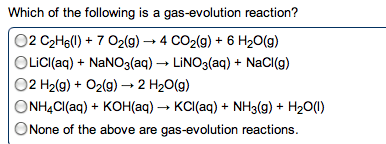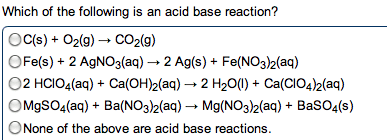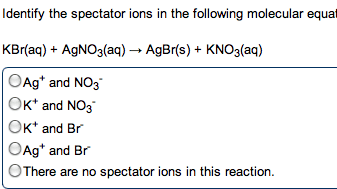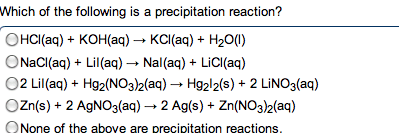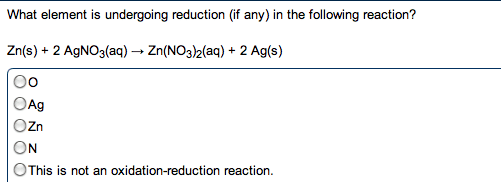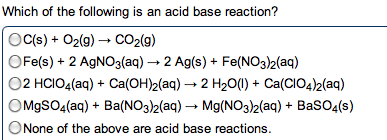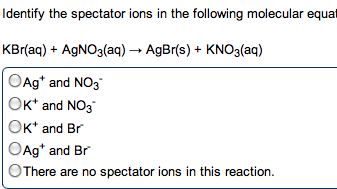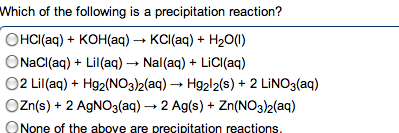Having trouble with thse questions. Please answer all questions correctly. Will provide a thumbs up.
1.Which of these equations is the balanced reaction between nitrous acid solution and solidmagnesium hydroxide ?
A.2NH3(aq) + MgOH (s) Mg(NH4)2(aq) + 2 H2O(l)
B.2HNO2(aq) + Mg(OH)2(s) Mg(NO2)2(aq) + 2 H2O(l)
C.2HNO3(aq) + Mg(OH)2(s) Mg(NO3)2(aq) + 2 H2O(l)
D.2HNO2(aq) + MgOH (s) Mg(NO3)2(s) + 2H2O(l)
2.Balance the following chemical equation:
C3H7OH(l) + O2(g)CO2(g) + H2O(g)
a. C3H7OH(l) + 4 O2(g)3 CO2(g) + 4 H2O(g)
b.2 C3H7OH(l) + 9 O2(g)6 CO2(g) + 8 H2O(g)
c.C3H7OH(l) + 5 O2(g)3 CO2(g) + 4 H2O(g)
d.C3H7OH(l) + O2(g)CO2(g) + H2O(g)
3.Which species would be considered a spectator ion based on the following equation?
Ba2+ + 2NO3â + 2Na+ + SO42- â BaSO4(s) + 2NO3â + 2Na+
SO42-
2NO3â
Ba2+
BaSO4
4.Barium sulfate is often ingested to aid in the diagnosis of GI tract disorders. The equation for its production is Ba2+ + SO42- â BaSO4(s). What type of equation is this?
A full equation
A net ionic equation
A total ionic equation
An oxidation-reduction equation
5.Which species is being reduced in this reaction?
CuO(s) + H2(g) Cu(s) + H2O(g)
H2O
CuO
Cu
H2
6.Which of the following is an oxidizing agent?
H2
NH3
O2
H2O
7.The following chemical equation,
HC2H3O2(aq) + KOH(aq) KC2H3O2(aq) + H2O(l),
is an example of a(n) _______ reaction.
a.oxidation-reduction and acid-base
b.acid-base
c.precipitation
d.oxidation-reduction and precipitation
e.oxidation-reduction
8.What substance is oxidized in the following reaction?
4HCl + MnO2 â Cl2 + 2H2O + MnCl2
a.Mn in MnO2
b.O in MnO2
c.Cl in HCl
d.H in HCl
9.What is the reducing agent in the following reaction?
4HCl + MnO2 â Cl2 + 2H2O + MnCl2
Cl2
MnCl2
HCl
MnO2
10.All redox reactions involve oxygen.
True
False
11.The term formula weight can be used with respect to which of the following?
A.ionic compounds
B.covalent compounds
C.both a and b
D.neither a nor b
12.What is the molecular weight of ibuprofen, C13H18O2?
A.206.3 amu
B.377.7 amu
C.29.0 amu
D.289.4 amu
13.The mass of an atom of 12C is exactly 12 atomic mass units. Which of the following describes a mole of 12C atoms?
A.a sample which weighs exactly 12 atomic mass units
B.a sample which contains 6.02 Ã 1023 atoms of 12C
C.both a and b
D.neither a nor b
14.The mass of an atom of 12C is exactly 12 atomic mass units. Which of the following describes a mole of 12C atoms?
A.a sample which contains 6.02 Ã 1023 atoms of 12C
B.a sample which weighs exactly 12.011 grams
C.both a and b
D.neither a nor b
15.What is the molar mass of water, H2O?
A.18.02 g
B.18.02 amu
C.17.01 g
D.17.01 amu
16.What is the molar mass of glucose, C6H12O6?
A.180.2 amu
B.180.2 g
C.60.05 amu
D.60.05 g
17.In the reaction 2H2O â 2H2 + O2, 2.0 mol water will produce how many grams of O2?
32
64
16
36
18.In the reaction 2CH4 + O2 â 2CO + 4H2, how many molecules of CO will be produced by the complete reaction of 1.60 grams of CH4?
3.01 Ã 1022
2.00
12.0 Ã 1023
6.02 Ã 1022
19.Suppose 2.43 g of magnesium is reacted with 3.20 g of oxygen: 2Mg + O2 â 2MgO. How many grams of MgO will be produced?
1.27
4.03
5.63
8.06
20.Which of the following conversion factors would allow one to calculate the amount of PbI2produced from a given amount of NaI in the following unbalanced reaction?
Pb(NO3)2 + Nal â Pbl2 + NaNO3
a.
b.
c.
d.
21.The unbalanced equation for the reduction of copper(I) sulfide with oxygen is given below. What mass of copper is produced from the reduction of 7.50 g Cu2S?
Cu2S(s) + O2(g) Cu(s) + SO2(g)
18.8 g
5.99 g
1.50 g
9.39 g
2.99 g
22.How many grams of aluminum oxide are produced by the complete reaction of 19.8 g aluminum with excess oxygen?
10.5 g aluminum oxide
37.4 g aluminum oxide
49.9 g aluminum oxide
74.8 g aluminum oxide
23.If 5 grams of CO and 5 grams of O2 are combined according to the reaction, which is the limiting reagent?
2CO + O2 â 2CO2
O2
CO and O2
CO2
CO
24.In an industrial process, nitrogen is reacted with hydrogen to produce ammonia. The percent yield of this particular process is 26%. How much hydrogen is needed to produce 4.8 kg ammonia?
1.5 kg
7.0 kg
0.85 kg
3.3 kg
25.A percentage yield greater than 100% has been reported in a scientific paper you are assigned to read. What would be a reasonable explanation for this?
a. The product was measured more than once.
b. It must be a typographical error since yields can't exceed 100%.
c. A lack of training of the professor who published the study.
d. Small measurement errors could have caused this to occur.
26.In an industrial process, nitrogen is reacted with hydrogen to produce ammonia. The percent yield of this particular process is 24.8%. How much hydrogen is needed to produce 3.7 kg ammonia?
1.8 kg
1.2 kg
4.4 kg
12 kg
2.7 kg
27.The following reaction has a percent yield of 90.5%. How many grams of carbon dioxide are produced from 78.5 g calcium carbonate via this reaction?
2 HNO3(aq) + CaCO3(aq) Ca(NO3)2(aq) + H2O(l) + CO2(g)
34.5 g
21.6 g
38.1 g
31.2 g
28.When gas molecules dissolve in liquids to form a saturated system, the process is usually
exothermic.
endothermic.
independent of the nature of the liquid.
temperature independent.
29.The reaction below would be considered.
CaCO3 + heat â CaO + CO2
an exothermic combination.
an exothermic decomposition.
an endothermic combination.
an endothermic decomposition.
30.The combustion of one mole of propane, C3H8, releases 531 kcal. How much heat is released by the combustion of 1.20 moles of propane?
A.584 kcal
B.690 kcal
C.443 kcal
D.637 kcal
31.The combustion of one mole of propane, C3H8, releases 531 kcal. How much heat is released by the combustion of 4.40 g of propane?
A.531 kcal
B.5.31 Ã 104 kcal
C.53.1 kcal
D.5.31 Ã 103 kcal
32.Metabolism of one mole of glucose, C6H12O6, releases 670 kcal. How much heat is released by the combustion of 0.300 moles of glucose?
A.201 kcal
B.2.41 Ã 103 kcal
C.186 kcal
D.2.23 Ã 103 kcal
33.Metabolism of one mole of glucose, C6H12O6, releases 6.70 Ã 102 kcal. How much heat is released by the combustion of 50.0 g of glucose?
A.201 kcal
B.2.41 Ã 103 kcal
C.186 kcal
D.2.23 Ã 103 kcal
Having trouble with thse questions. Please answer all questions correctly. Will provide a thumbs up.
1.Which of these equations is the balanced reaction between nitrous acid solution and solidmagnesium hydroxide ?
A.2NH3(aq) + MgOH (s) Mg(NH4)2(aq) + 2 H2O(l)
B.2HNO2(aq) + Mg(OH)2(s) Mg(NO2)2(aq) + 2 H2O(l)
C.2HNO3(aq) + Mg(OH)2(s) Mg(NO3)2(aq) + 2 H2O(l)
D.2HNO2(aq) + MgOH (s) Mg(NO3)2(s) + 2H2O(l)
2.Balance the following chemical equation:
C3H7OH(l) + O2(g)CO2(g) + H2O(g)
a. C3H7OH(l) + 4 O2(g)3 CO2(g) + 4 H2O(g)
b.2 C3H7OH(l) + 9 O2(g)6 CO2(g) + 8 H2O(g)
c.C3H7OH(l) + 5 O2(g)3 CO2(g) + 4 H2O(g)
d.C3H7OH(l) + O2(g)CO2(g) + H2O(g)
3.Which species would be considered a spectator ion based on the following equation?
Ba2+ + 2NO3â + 2Na+ + SO42- â BaSO4(s) + 2NO3â + 2Na+
SO42-
2NO3â
Ba2+
BaSO4
4.Barium sulfate is often ingested to aid in the diagnosis of GI tract disorders. The equation for its production is Ba2+ + SO42- â BaSO4(s). What type of equation is this?
A full equation
A net ionic equation
A total ionic equation
An oxidation-reduction equation
5.Which species is being reduced in this reaction?
CuO(s) + H2(g) Cu(s) + H2O(g)
H2O
CuO
Cu
H2
6.Which of the following is an oxidizing agent?
H2
NH3
O2
H2O
7.The following chemical equation,
HC2H3O2(aq) + KOH(aq) KC2H3O2(aq) + H2O(l),
is an example of a(n) _______ reaction.
a.oxidation-reduction and acid-base
b.acid-base
c.precipitation
d.oxidation-reduction and precipitation
e.oxidation-reduction
8.What substance is oxidized in the following reaction?
4HCl + MnO2 â Cl2 + 2H2O + MnCl2
a.Mn in MnO2
b.O in MnO2
c.Cl in HCl
d.H in HCl
9.What is the reducing agent in the following reaction?
4HCl + MnO2 â Cl2 + 2H2O + MnCl2
Cl2
MnCl2
HCl
MnO2
10.All redox reactions involve oxygen.
True
False
11.The term formula weight can be used with respect to which of the following?
A.ionic compounds
B.covalent compounds
C.both a and b
D.neither a nor b
12.What is the molecular weight of ibuprofen, C13H18O2?
A.206.3 amu
B.377.7 amu
C.29.0 amu
D.289.4 amu
13.The mass of an atom of 12C is exactly 12 atomic mass units. Which of the following describes a mole of 12C atoms?
A.a sample which weighs exactly 12 atomic mass units
B.a sample which contains 6.02 Ã 1023 atoms of 12C
C.both a and b
D.neither a nor b
14.The mass of an atom of 12C is exactly 12 atomic mass units. Which of the following describes a mole of 12C atoms?
A.a sample which contains 6.02 Ã 1023 atoms of 12C
B.a sample which weighs exactly 12.011 grams
C.both a and b
D.neither a nor b
15.What is the molar mass of water, H2O?
A.18.02 g
B.18.02 amu
C.17.01 g
D.17.01 amu
16.What is the molar mass of glucose, C6H12O6?
A.180.2 amu
B.180.2 g
C.60.05 amu
D.60.05 g
17.In the reaction 2H2O â 2H2 + O2, 2.0 mol water will produce how many grams of O2?
32
64
16
36
18.In the reaction 2CH4 + O2 â 2CO + 4H2, how many molecules of CO will be produced by the complete reaction of 1.60 grams of CH4?
3.01 Ã 1022
2.00
12.0 Ã 1023
6.02 Ã 1022
19.Suppose 2.43 g of magnesium is reacted with 3.20 g of oxygen: 2Mg + O2 â 2MgO. How many grams of MgO will be produced?
1.27
4.03
5.63
8.06
20.Which of the following conversion factors would allow one to calculate the amount of PbI2produced from a given amount of NaI in the following unbalanced reaction?
Pb(NO3)2 + Nal â Pbl2 + NaNO3
a.
b.
c.
d.
21.The unbalanced equation for the reduction of copper(I) sulfide with oxygen is given below. What mass of copper is produced from the reduction of 7.50 g Cu2S?
Cu2S(s) + O2(g) Cu(s) + SO2(g)
18.8 g
5.99 g
1.50 g
9.39 g
2.99 g
22.How many grams of aluminum oxide are produced by the complete reaction of 19.8 g aluminum with excess oxygen?
10.5 g aluminum oxide
37.4 g aluminum oxide
49.9 g aluminum oxide
74.8 g aluminum oxide
23.If 5 grams of CO and 5 grams of O2 are combined according to the reaction, which is the limiting reagent?
2CO + O2 â 2CO2
O2
CO and O2
CO2
CO
24.In an industrial process, nitrogen is reacted with hydrogen to produce ammonia. The percent yield of this particular process is 26%. How much hydrogen is needed to produce 4.8 kg ammonia?
1.5 kg
7.0 kg
0.85 kg
3.3 kg
25.A percentage yield greater than 100% has been reported in a scientific paper you are assigned to read. What would be a reasonable explanation for this?
a. The product was measured more than once.
b. It must be a typographical error since yields can't exceed 100%.
c. A lack of training of the professor who published the study.
d. Small measurement errors could have caused this to occur.
26.In an industrial process, nitrogen is reacted with hydrogen to produce ammonia. The percent yield of this particular process is 24.8%. How much hydrogen is needed to produce 3.7 kg ammonia?
1.8 kg
1.2 kg
4.4 kg
12 kg
2.7 kg
27.The following reaction has a percent yield of 90.5%. How many grams of carbon dioxide are produced from 78.5 g calcium carbonate via this reaction?
2 HNO3(aq) + CaCO3(aq) Ca(NO3)2(aq) + H2O(l) + CO2(g)
34.5 g
21.6 g
38.1 g
31.2 g
28.When gas molecules dissolve in liquids to form a saturated system, the process is usually
exothermic.
endothermic.
independent of the nature of the liquid.
temperature independent.
29.The reaction below would be considered.
CaCO3 + heat â CaO + CO2
an exothermic combination.
an exothermic decomposition.
an endothermic combination.
an endothermic decomposition.
30.The combustion of one mole of propane, C3H8, releases 531 kcal. How much heat is released by the combustion of 1.20 moles of propane?
A.584 kcal
B.690 kcal
C.443 kcal
D.637 kcal
31.The combustion of one mole of propane, C3H8, releases 531 kcal. How much heat is released by the combustion of 4.40 g of propane?
A.531 kcal
B.5.31 Ã 104 kcal
C.53.1 kcal
D.5.31 Ã 103 kcal
32.Metabolism of one mole of glucose, C6H12O6, releases 670 kcal. How much heat is released by the combustion of 0.300 moles of glucose?
A.201 kcal
B.2.41 Ã 103 kcal
C.186 kcal
D.2.23 Ã 103 kcal
33.Metabolism of one mole of glucose, C6H12O6, releases 6.70 Ã 102 kcal. How much heat is released by the combustion of 50.0 g of glucose?
A.201 kcal
B.2.41 Ã 103 kcal
C.186 kcal
D.2.23 Ã 103 kcal









